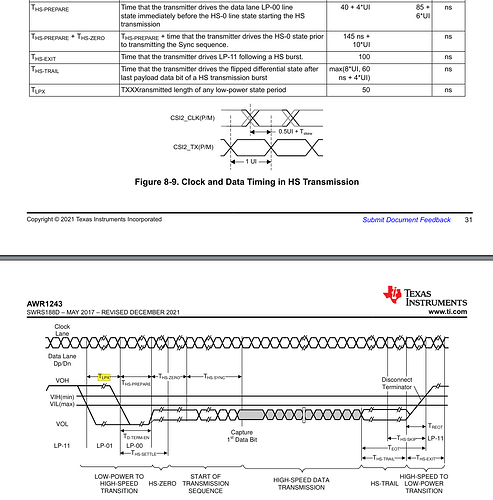Hi all,
I am trying to configure my Jetson Nano to read a radar data stream over MIPI interface.
My sensor does not use I2C interface but instead is programmed through SPI with a self contained app, while the driver should just care about receiving the data stream.
My issue is referred also in these posts:
Jetson AGX Xavier and TI MMWAVE Radar raw data capture over CSI
https://forums.developer.nvidia.com/t/receives-csi-data-without-i2c-and-device-tree-questions-for-none-camera-sensor
At first, I tried to reverse-engineer the dtb that was being flashed in a dts and start modifying from there.
This approach led me to a /dev/video0 showing up but no data was being received, cause I used the imx185.c file as template and I did not disable plugin manager, so I decided to start again from the actual dts sources.
I am using r32.6.1, so I downloaded sources and followed the guide:
at Using the Main Platform Device Tree File it’s told to change some files that are not in my folders.
So I changed these instead:
tegra210-porg-p3448-common.dtsi → remove “porg-plugin-manager/tegra210-porg-plugin-manager.dtsi”
tegra210-jetson-cv-base-p2597-2180-a00.dts → replace “jetson-platforms/tegra210-jetson-cv-camera-modules.dtsi” with a file that is a copy of this but includes also my sensor configuration (“my_sensor.dtsi”).
I think this is wrong though, because the dts file seems to refer to a different platform and I think it is not even included when building “tegra210-p3448-0000-p3449-0000-b00.dtb” through the ./nvbuild.sh script.
I modified that file because it’s the only file referring to “camera-modules” .
Result: obviously, /dev/video0 is not even showing up anymore.
What are the files that should be changed instead?



